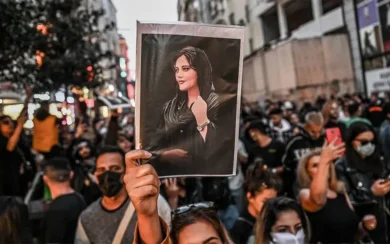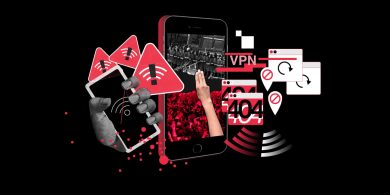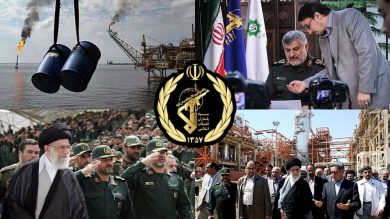The Islamic Revolutionary Guard Corps (IRGC) is central to Iran’s system of repression, carrying out violent crackdowns on dissent, arbitrary arrests, and torture of activists, journalists, and ethnic minorities. Despite global attention to these abuses, the voices of the victims provide the clearest testimony to the IRGC’s brutal tactics. Their stories highlight the ongoing violations of human rights and underscore the need for accountability and international support for Iranian activists. This article presents the tactics used by the IRGC, the experiences of victims, and the global response to these human rights abuses.
1. The IRGC’s Role in Repression
The IRGC functions as both a military force and an internal security apparatus, designed to protect the Islamic regime by suppressing dissent.
A. Enforcement of Morality Laws
• The IRGC works closely with the morality police to enforce strict Islamic laws.
• Women are frequently arrested for violating hijab laws, and protesters against these laws face harassment and violence.
B. Crackdowns on Protests
• During mass protests, the IRGC deploys both regular troops and Basij militias to disperse crowds using live ammunition, tear gas, and beatings.
• Thousands of protesters have been killed or detained in crackdowns, particularly during the 2019 fuel price protests and the 2022 Women, Life, Freedom protests.
C. Arbitrary Arrests and Torture
• Activists, journalists, and ordinary citizens are often detained without formal charges.
• Reports from detainees describe torture methods, including beatings, sexual violence, and psychological abuse designed to extract forced confessions.
2. Stories from Victims of IRGC Repression
The voices of those who have survived IRGC repression reveal the scale of abuse and the trauma inflicted on individuals and their families.
A. Nasrin’s Story: Defying Morality Laws
Nasrin, a university student, was arrested in Tehran for removing her hijab during a protest.
• “They dragged me into a van, blindfolded me, and took me to a detention center. For hours, I was beaten and interrogated.”
• Nasrin was eventually released on bail but faces ongoing surveillance and harassment from authorities.
B. Ali’s Story: Arrested for Social Media Activism
Ali, a journalist, was targeted by IRGC cyber units after posting videos of police brutality on social media.
• “They hacked my accounts and used fake messages to accuse me of collaborating with foreign governments.”
• He was held in solitary confinement for months, subjected to mock executions, and forced to sign a false confession.
C. Leila’s Story: A Voice from Minority Communities
Leila, a Kurdish activist, has witnessed the targeted repression of ethnic minorities in Iran.
• “In our region, the IRGC treats us like enemies. Entire villages have been raided, and people are detained without explanation.”
• Leila’s brother was killed during a protest, and her family faces constant intimidation from security forces.
3. Tactics of Repression
The IRGC employs a range of tactics to suppress dissent and maintain control over the population.
A. Digital Surveillance
• The IRGC monitors online communications, using cyberattacks to track activists and infiltrate encrypted messaging apps.
• Activists risk arrest if their online activities are detected, and many are forced to use VPNs and secure platforms to communicate.
B. Psychological Intimidation
• Families of activists are often harassed, with threats of detention, job loss, or harm to relatives.
• Public executions and show trials are used to instill fear in the broader population.
C. Use of Violence
• The IRGC does not hesitate to use lethal force against protesters, often firing into crowds to prevent demonstrations from escalating.
• Medical professionals have reported that security forces block access to hospitals for injured protesters, leaving many without medical treatment.
4. The Impact on Society
The IRGC’s actions have created a climate of fear, mistrust, and hopelessness among many Iranians.
A. Mental Health Consequences
• Survivors of torture and violence often suffer from depression, anxiety, and post-traumatic stress disorder (PTSD).
• Many families of victims experience long-term trauma due to ongoing harassment and social isolation.
B. Suppression of Civil Society
• NGOs, journalists, and human rights organizations are frequently targeted, weakening efforts to promote reform and transparency.
• The closure of independent media has left many Iranians reliant on state propaganda.
C. Economic Hardship
• Activists and their families are often blacklisted, making it difficult for them to find employment.
• Corruption within the IRGC’s economic empire exacerbates poverty and inequality, worsening the socio-economic conditions for ordinary citizens.
5. Global Response to IRGC Abuses
Countries and human rights organizations have taken various measures to hold the IRGC accountable for its human rights violations.
A. Sanctions
• The United States, European Union, Canada, and others have imposed targeted sanctions on IRGC leaders and entities involved in repression.
• Sanctions restrict financial transactions, travel, and access to foreign assets, aiming to limit the IRGC’s capacity to fund its operations.
B. International Investigations
• The United Nations and human rights tribunals have called for investigations into the IRGC’s abuses.
• However, Iran’s refusal to cooperate with these efforts has hindered accountability measures.
C. Advocacy and Awareness Campaigns
• Iranian diaspora communities have led global protests and advocacy efforts, calling for greater international pressure on the Iranian government.
• Organizations such as Amnesty International and Human Rights Watch have documented human rights violations and called for UN interventions.
6. The Path Forward: Strengthening Accountability
To effectively counter the IRGC’s repression, the international community must adopt coordinated strategies to promote accountability and support Iranian civil society.
A. Expand Sanctions on Human Rights Violators
• Sanctions should target not only IRGC officials but also businesses and front companies that fund repression.
B. Support for Independent Media and Activists
• Providing resources for independent Persian-language media can help counter the regime’s propaganda and amplify the voices of victims.
• Activists require digital security training and legal support to continue their work safely.
C. Push for International Investigations
• Diplomatic pressure should focus on establishing independent inquiries into human rights violations.
• Countries should advocate for UN resolutions that address Iran’s treatment of protesters and activists.
Conclusion
The IRGC’s human rights violations have inflicted severe suffering on countless Iranians, from activists and journalists to ethnic minorities and ordinary citizens. Through global solidarity, sanctions, and legal action, the international community can help hold the IRGC accountable and support the fight for freedom, justice, and human rights in Iran.
Join Our Newsletter!
Stay informed with the latest updates, news, and ways to take action in the fight for justice and global security. Sign up now to get updates delivered straight to your inbox!




